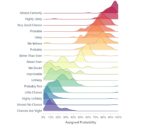
by tyler garrett | Jun 18, 2025 | Data Processing
Imagine harnessing the massive data flow your enterprise produces daily, capturing meaningful insights quickly, and being equipped to react strategically. Histogram analytics makes this achievable, offering a robust statistical toolkit designed for scale—enabling leaders, analysts, and visionaries alike to clarify patterns amid data chaos, optimizing decisions in real-time. In today’s tech-powered age, capturing distributional insights with histogram analytics elevates your organization’s competitive edge, providing clarity around user behavior, performance metrics, and market trends while enabling strategic agility and informed decisions that drive transformative change.
Unlocking the Power of Histogram Analytics
In the modern data-driven landscape, precise analytics requires tools that are both powerful and intuitive. Among these, histogram analytics stands apart as a mechanism uniquely designed to illuminate the underlying dynamics of large-scale data distributions. Unlike simple averages and medians, histograms offer visibility into data variability, enabling informed decisions about strategy adjustments, customer segmentation, and performance optimizations.
Leveraging histogram analytics helps stakeholders digest dense, multi-dimensional datasets rapidly, guiding strategic planning through visually intuitive distribution patterns. This statistical insight equips analysts to parse intricate details quickly, spot trends, identify anomalies, and uncover opportunities that might otherwise remain hidden. At its core, histogram analytics aligns directly with the art of storytelling through data visualization, crafting narratives from distribution curves that resonate with stakeholders and decision-makers.
In essence, histogram analytics simplifies the complexity inherent in large, unwieldy datasets. It reveals hidden sub-groups, identifies frequency patterns, and quantifies distribution ranges—insights necessary to streamline operations, adjust efficiencies, or pivot tactically. Organizations who engage deeply with histogram analytics will find their understanding of market position, user behavior, and operational effectiveness elevated at scale.
Why Histograms Are Essential for Scaling Analytics Efforts
As companies grow and datasets expand exponentially, conventional methods of analytics—such as averages, medians, and simple aggregates—quickly hit limitations. These traditional analyses obscure insights behind a curtain of averaged data, concealing vital nuances that make or break successful strategies. Histogram analytics removes these barriers, offering distribution clarity across massive datasets—enabling scalable analytics capable of impacting every decision from customer experience to operational efficiency.
Scalability is inherently advantageous when leveraging histogram analytics, allowing decision-makers to interpret nuances with unprecedented clarity. Whether visualizing latency distributions in your real-time applications or analyzing transaction frequencies for detecting anomalies, histograms deliver clarity quickly and concisely. Such rich visibility into data distribution directly feeds into critical workflows that require troubleshooting performance bottlenecks, underperforming processes, or understanding risk factors. To experience a deeper dive into intelligent methods for maintaining analytics performance, explore our resource on real-time dashboard performance benchmarks.
With histograms, scalability doesn’t sacrifice speed or precision—on the contrary, it flourishes. Teams empowered by histogram analysis can rapidly classify customers to develop personalized strategies, detect operational inefficiencies instantly, and anticipate market shifts proactively. As a result, histogram-driven analytics supports swift adaptation in your enterprise environment, providing proactive visibility across growing volumes of data.
Harnessing Histograms for Improved Fraud Detection
In today’s competitive and increasingly digital world, fraud detection is no longer optional but a necessity. However, fraud patterns have evolved beyond traditional spreadsheet-based models—a topic we’ve discussed previously in our article, “From spreadsheets to streaming: how fraud detection has evolved”. Histogram analytics offers robust solutions for addressing these emerging challenges by modeling transaction frequency distributions, behavioral deviation patterns, and unexpected anomalies quickly.
Histograms enable financial institutions and businesses to visualize transaction patterns clearly and efficiently. Suspicious patterns become instantly recognizable, empowering swift investigations and pre-emptive actions. By understanding the baseline distribution of what constitutes standard transaction behavior, anomaly-fueled events—such as unusually frequent small withdrawals or irregular transaction intervals—are flagged much faster and more accurately.
The power of histogram analytics to streamline complex fraud detection metrics reduces the risk of false positives and helps compliance teams stay ahead of fraudsters’ continually evolving strategies. Rather than manually crawling through transaction logs or outdated spreadsheet methods, histograms generate clear visuals of anomaly concentration points—focusing scrutiny precisely where needed most, and freeing resources for strategic high-impact initiatives.
Driving Strategic Decisions with Data-Driven Histogram Insights
Gaining superior competitive advantage isn’t merely about having more data—it’s about making that data actionable. Executives empowered with histogram-based insights can strategize around real-time distributional analyses—quantifying market segments in ways impossible with simpler statistical approaches. Understanding customer spend frequency, product preference distributions, and seasonal trend fluctuations through histograms creates opportunities for significant business growth via data-driven market intelligence.
Effectively leveraging histogram analytics often begins by bridging advanced data analysis with concrete business objectives, a concept we’ve extensively covered in our framework on creating data-driven case studies that convert. Evidence-driven decision-making where choices pivot on distributional understanding—recognizing not only averages but also extremes, patterns, and variances—means better, more strategic decisions while minimizing risks.
Histogram analytics also mitigates potential strategic blind spots that conventional dashboards often carry. Our comprehensive exploration of the topic—how to kill a dashboard before it kills your strategy—showcases the limitations inherent in traditional analytics dashboards. A histogram-driven analytical solution communicates distributional insights clearly, enabling stakeholders to rapidly pinpoint areas where adjustments are necessary or supporting initiatives maximizing profitability and customer satisfaction.
Ensuring Data Quality and Governance with Histograms
The strength of your analytics is inherently tied to the quality and governance of your data set. Histogram analytics reinforces high-caliber data management by offering unmatched granularity and clarity around everything from data completeness to accuracy. Organizations benefit tremendously from histogram-based metrics that can identify outliers, erroneous entries, and inconsistent distributions quickly and effortlessly.
A robust histogram-driven data governance framework ensures accurate representation of distributional insights across all levels of your enterprise, promoting better business outcomes and more confident strategic decisions. We illuminate this critical aspect in our detailed guide, data governance practices comprehensive guide, designed to support organizations effectively applying histogram analytics throughout their data governance processes.
Through histograms, data stewardship programs can rapidly uncover underlying data quality issues, helping stakeholders improve control over various data sources. With clarity around data distributions, database administrators and analysts working in solutions like PostgreSQL find strengthened visibility, reliability, and accuracy—maximizing return on analytics investments. If your team needs expert guidance, our PostgreSQL consulting services can amplify your analytics and governance capabilities to enterprise standards, ensuring histogram analytics deliver their maximum strategic potential.
Looking Ahead: The Future of Histogram Analytics at Scale
As we lean into an increasingly data-driven world, histogram analytics will continually evolve, empowered further by advancements in automation, machine learning, and artificial intelligence. Continuous improvements will enable near-real-time histogram analytics—transforming operational responsiveness, predicting trends instantly, and placing unprecedented power into leaders’ hands to steer outcomes proactively.
Future trends suggest histogram analytics techniques integrated directly within organizational workflows will foster intuitive, actionable insights across operational, financial, and customer-facing spheres. Organizations seeking consistent competitive edge must adopt strategies now, positioning histograms as fundamental to analytics infrastructure and data culture alike.
The horizon is bright for histogram analytics, offering insights of increasing precision, distributed across expanding data pipelines. We anticipate further convergence between histogram analytics and advanced visualization platforms, fueling richer storytelling, sharper decisions, and hyper-competitive strategies. The winners in tomorrow’s analytics race will be organizations employing histogram analytics today—transforming insights at scale.
Histogram analytics unlocks exponential value, transforming messy big data into clear, communicable distributions and narratives. Empower your decision-makers, boost confidence in your analytics, and illuminate the path forward at enterprise scale today.

by tyler garrett | Jun 18, 2025 | Data Visual
Today’s decision-makers stand atop a mountain of data, yet the most transformative insights often emerge from above—literally. Drone imagery analytics is changing the landscape of data-driven decisions across industries from agriculture to construction, providing technological visionaries with unparalleled insights through powerful aerial viewpoints. The boom of aerial data visualization platforms blending drone-captured imagery with sophisticated analytics offers a new era of clarity, precision, and confidence in enterprise decision-making. As experts in data, analytics, and innovation, we understand that grasping drone-driven data solutions represents not only a competitive advantage but a necessity for businesses navigating complex decision terrains. In this guide, we’ll explore the power of drone imaging analytics, help you understand critical components of aerial visualization platforms, highlight essential best practices, and reveal how strategic data management makes all the difference in leveraging drone-captured data effectively.
The Rise of Drone Imagery: A New Frontier in Data Analytics
Drone technology has evolved from its nascent experimental phases into becoming a preferred vehicle for high-precision analytics. With the ability to gather critical data from vantage points previously inaccessible or prohibitively expensive, drones provide unprecedented granularity and accuracy. Modern drone platforms equipped with advanced camera systems, multispectral sensors, LiDAR, and thermal imaging, transform simple aerial visuals into comprehensive operational insight. Whether surveying agricultural health, inspecting infrastructure, or performing environmental monitoring, drones deliver timely, cost-effective, and robust sets of actionable information.
Moreover, combining drone data into enterprise-wide analytics strategies significantly enhances visibility and decision-making efficiency. Sophisticated organizations integrate drone-based aerial visualizations directly into their data flow and decision support systems. Take a deeper dive into these cutting-edge practices with our detailed guide on responsive visualization design for multi-device analytics, a must-know frontier for those looking to optimize data utilization across varied platforms and devices.
Undoubtedly, drone imagery analytics represents more than just an entertaining technological progression—it symbolizes an entirely new data analytics frontier, reshaping industries that depend on precise geographical, environmental, and spatial understanding to thrive.
Aerial Data Visualization Platforms: How They Transform Raw Imagery into Insight
The immense value hidden in drone-collected data is unlocked through powerful aerial data visualization platforms. These platforms ingest, process, analyze, and visualize vast geospatial datasets, converting them into actionable insights accessible to decision-makers—virtually anytime, anywhere. Key capabilities of leading visualization platforms include orthoimagery generation, volumetric analysis, automated terrain modeling, vegetation health indices computation, and damage anomaly detection.
Advanced platforms provide intuitive user interfaces, enabling seamless navigation of aerial imagery and analytics without complexity. By leveraging scalable cloud infrastructure, they support rapidly processed large datasets, ensuring timely decision-making processes. Enterprises utilizing these platforms gain an immediate advantage, effortlessly navigating spatial analytics and tapping into results that directly impact strategic decisions and operational efficiency.
A mature, versatile aerial visualization platform will often include integration capabilities to streamline operational workflows with existing enterprise software stacks. Understanding data integration challenges and mastering concepts such as data element collision detection in enterprise integration ensures that aerial visualization components synergize smoothly within organizational environments, providing reliable and consistent analytics across various applications.
Integration Strategies: Leveraging Drone Data and Advanced Data Architectures
Efficient drone data utilization isn’t solely about technology but understanding how the data is integrated into existing analytical frameworks. Enterprises often adopt modern data architectures that harmonize drone-sourced visuals with other data assets, such as field IoT sensors, operational databases, and enterprise applications. Two of the most significant data architectures in current deployment strategies include data lakes and the increasingly popular data mesh approach. By exploring our article “Data Mesh vs Data Lake: Understanding Modern Data Architectures,” decision-makers can confidently determine optimal strategies for integrating drone analytics into their data ecosystems.
Proper integration practices also demand robust metadata management and discovery approaches. Many enterprises employ advanced knowledge-driven strategies such as knowledge graphs. These enhance metadata discoverability and improve the contextual interpretation of drone-collected data. Investing time into informed approaches such as knowledge graph implementation for enhanced metadata discovery positions organizations to derive richer insights from drone-based analytics, ensuring clarity and consistency across operational contexts.
Interactive Data Exploration: Adding Value through Micro-interactions and Rich UX Design
Great analytics demand not just accurate, processed data but intuitive interactions, allowing stakeholders to easily understand data implications and derive actionable insights. Increasingly, aerial analytics platforms pay special attention to micro-interaction design principles, enhancing user experience and improving analyst productivity. These streamlined interactions guide users through visualization processes and enhance the clarity and effectiveness of drone imagery analytics.
Incorporating best practices such as those outlined within our strategic piece on micro-interaction design in interactive data exploration, leading platforms simplify data interaction, clarifying analytics outcomes and democratizing insights across technical and non-technical stakeholders alike. Friendly guidance, progressive disclosure, and intuitive interface feedback tremendously enhance clarity and reduce cognitive load, enabling easy digestion of complex drone-derived spatial data.
Polyglot Visualization: Combining Multiple Visualization Libraries for Richer Insights
No single visualization library alone can adequately address all the varied use cases drone data analytics present. Enterprises regularly require diverse visual analytics approaches—from heatmaps presenting agricultural crop vigor, 3D models depicting infrastructure conditions, or temporal animation visualizing mined resource extraction over time. Leveraging multiple libraries and visualization tools, an effective polyglot strategy emerges, blending strengths of different visual libraries and creating richer, more nuanced analytical narratives.
Our detailed exploration of polyglot visualization demonstrates how combining powerful visualization libraries often amplifies analytical impact. Approaches that intelligently blend adjacent technologies and multiple third-party libraries provide multilayered views and richer contextualization, helping users perceive trends and patterns that singular visual libraries cannot reveal in isolation.
High-Performance Aerial Imagery Data Pipelines: Optimizing Drone Data for Fast Processing
Drone imagery produces substantial amounts of raw data, requiring robust data pipelines to support analysis. Utilizing modern frameworks like Apache Spark in your drone analytics pipelines improves processing efficiency and scalability. To maximize performance, practitioners should become familiar with best practices discussed in one of our most recommended resources, describing the 10 best practices for optimizing Spark jobs, enabling enterprises to manage significant drone imagery processing workloads quickly and efficiently.
Additionally, drone imagery often arrives from multiple sources, requiring deterministic management of data accuracy and quality. Utilizing professional methodologies such as golden record management in multi-source environments, companies maintain robust, reliable drone data pipelines that ensure accuracy and usability for analytics-driven decisions. These powerful data management strategies become vital components in your overarching drone-based analytics operational ecosystem.
Scaling Success: Professional Consulting for Drone Imagery Analytics Integration
Implementing drone imagery analytics requires strategic planning and deep technical expertise. Professional consultancy practices assist in ensuring smooth integration, maximizing return on investment, and rapidly overcoming roadblocks common in complex technical projects. At Dev3lop, our software consultants specialize in data, analytics, and innovation, providing personalized guidance from drone data integration strategies to advanced techniques leveraging various enterprise data stores. Explore the strategic advantage of tailored advice through our own offering in PostgreSQL consulting services, a key component of high-performance data processing workflows.
Through engaging cross-industry experiences and continuously sharing deep technical knowledge, we empower innovators, engineers, and analytics strategists to succeed in their complex integrations of drone imagery analytics and advanced aerial visualizations. Establishing a clear career direction for your data engineers or analysts can significantly enhance internal competence. Check out one of our essential guides: Building a Data Engineering Career Path: Skills and Progression to bolster your team’s capabilities and generate lasting analytics success.
Thank you for your support, follow DEV3LOPCOM, LLC on LinkedIn and YouTube.

by tyler garrett | Jun 12, 2025 | Data Processing
In the current era of big data and complex interconnected systems, graph analytics plays an increasingly critical role in understanding the nuanced relationships within data. As businesses grapple with more extensive, intricate systems and data sets, the method you choose to store and represent your graphs becomes paramount. Regardless of the sector—be it finance, sustainability initiatives like Austin’s urban environment improvements, or privacy-driven analytics using advanced record linkage techniques—making informed decisions about data structure strategy is non-negotiable. A graph’s scale introduces a particular dilemma: Should organizations rely on adjacency lists or adjacency matrices? Each option brings unique trade-offs. As technical strategists specialized in data analytics and software innovation at Dev3lop, we find it’s crucial for decision-makers to revisit these choices regularly. Let’s navigate this complex topic and break down which approach is better when working with graphs at scale.
Adjacency Matrices: A Structured Simplicity
At first glance, adjacency matrices appear exceptionally straightforward—a simple two-dimensional array clarifying whether connections between nodes exist. Rows and columns cleanly represent graph vertices, with matrix values clearly indicating edges. This structured representation allows quick lookups for verifying connections between any two nodes, making it especially attractive for tightly connected graphs (dense graphs).
However, simplicity doesn’t always scale smoothly. With growing node counts, a graph’s adjacency matrix rapidly expands. Given the square growth pattern (N²), the matrix quickly becomes heavy on space consumption, challenging businesses constrained by memory limitations. Even more costly is that adjacency matrices tend overwhelmingly to contain zeros for sparse graphs—meaning wasted storage and inefficiencies take hold as scalability needs arise in business contexts. This underutilization highlights challenges enterprise stakeholders face when making technology choices, especially when misalignment leads organizations to mistakenly start blaming the data team for project inefficiencies.
On the positive side, adjacency matrices powerfully support matrix algebra operations, leveraging optimized mathematical libraries. For businesses actively using machine learning techniques like graph embeddings to gain insights beyond basic keywords—such as described in our post on semantic embeddings for business intelligence beyond keywords—this can translate into actionable analytic opportunities.
Strengths of Adjacency Matrices:
- Reliable query speed for edge connectivity checks (O(1)).
- Easier matrix algebra applications enabling robust mathematical and machine learning operations.
- Constant-time edge lookups ideal for dense graphs.
Weaknesses of Adjacency Matrices:
- High storage overhead, particularly problematic for sparse or huge-scale graphs.
- Expensive to insert or remove nodes dynamically.
- Limited efficiency when processing sparsely connected networks at extreme scales.
Adjacency Lists: An Efficient, Dynamic Alternative
An adjacency list—a classic data structure favored by software engineers, data architects, and technical strategists—uses a collection (usually a dictionary or a map) of lists representing nodes and their immediate connections. As such, it effectively accommodates sparse graphs, requiring memory only proportional to edges rather than vertices squared. Businesses scaling rapidly, dealing with dynamic or user-generated networks, or applying context-aware data usage policies, find adjacency lists particularly relevant.
Adding and removing nodes or edges in adjacency lists is typically seamless, making them tremendously efficient for dynamic, evolving graphs. Real-world business graphs, including social interactions, semantic networks, transaction flows, and urban planning relationships—as discussed in our article on analytics-driven sustainability practices—benefit significantly from this flexibility and lower overhead.
Still, adjacency lists are not without their downsides. Checking connectivity between two arbitrary nodes requires traversing, leading to less predictable performance—an important consideration. Companies addressing API responsiveness, data visualization workflows, or advanced BI analytics (services we provide expertise through Advanced Tableau Consulting) must consider these latency implications.
Strengths of Adjacency Lists:
- Space-efficient, especially ideal for sparse graphs.
- Flexibility and ease in inserting and removing nodes, ideal for dynamic business environments.
- Lower overhead makes scaling with expansive datasets feasible and cost-effective.
Weaknesses of Adjacency Lists:
- Slower lookup times for direct node adjacency queries (compared to matrices).
- Inefficient for dense graphs requiring frequent edge relationship checks.
- Complexity in performing matrix-based computations and algebra operations.
Balancing Performance: The Right Choice For Your Business Requirements
Scalable graph implementations critically depend upon matching the chosen data structure to your application’s real-world requirements. When immediate direct connectivity checks matter—as they often do in low-latency network analysis or real-time transactional finance—the adjacency matrix might leverage performance benefits sufficiently to justify cost implications. Contrarily, when dealing with rapidly evolving, sparsely populated relationships, adjacency lists offer superior dynamism, saving computing resources better utilized in processing and delivering insights.
Consider the nuances mentioned in our post “The Batch Size Dilemma”, where careful analysis of systems’ throughput and optimization considerations can save costs and boost efficiencies significantly. Likewise, businesses with sophisticated ecosystems integrating global data flows might weigh the trade-offs between sparsity (lists) versus dense operations (matrices) as rigorously as they do with visualization ethics and preventing misleading chart designs.
Ultimately, making informed strategic technology choices reflects a deep understanding of both representation methods and aligns their strengths with your organization’s ultimate goals. Our seasoned strategists within Dev3lop frequently emphasize these nuances, guiding teams beyond superficial analytical strategies towards mature, sustainable technologic choices.
Combining Approaches: Hybrid Methods in Advanced Graph Analytics
Forward-thinking solution architects and data scientists increasingly explore hybrid methods intelligently merging adjacency lists and matrices to exploit respective advantages. These combined strategies integrate space-efficient adjacency lists with specialized, domain-driven adjacency matrix usage tuned for algorithms requiring dense mathematical properties. Such hybrid approaches are frequently deployed within advanced industries, including semantic embeddings, privacy-preservation methods, and context-aware policies explored comprehensively within our blog content—including detailed coverage of storytelling through data visualization.
This convergence can lead to streamlined API-driven data facilities, improved application responsiveness, and optimized performance across analytics platforms. Leveraging hybrid techniques strengthens API systems quickly bringing value to businesses, as explained in our piece about driving value in quick API consulting engagements.
By embracing hybrid data representations, enterprises may significantly reduce overall system complexity, improve performance adaptability, and make thoughtful use of computational and storage resources. Adopt this strategic lens into your technology management now, enabling your data systems to efficiently scale alongside growing business complexity and data interconnectedness.
Conclusion: Strategic Graph Representation for Scalable Success
Understanding the distinct implications between adjacency matrix and adjacency list representations isn’t merely theoretical decision-making—it’s fundamental to high-performing, scalable analytic applications. As technical strategists skilled in advanced analytics and innovation, we consistently encourage you to reevaluate and consciously align your business’s technology stacks with your specific needs.
The evolving landscape of data analytics and technology demands dynamic adaptations, strategic selections, and ongoing innovation. By clearly grasping adjacency lists versus adjacency matrix representations at scale, you empower your enterprise to leverage data strategically, effectively driving innovation, optimization, and ultimately: business success.

by tyler garrett | Jun 12, 2025 | Data Processing
Stream processing—where data flows continuously and demands instant analysis—is the heartbeat of modern, real-time data ecosystems. As decision-makers in today’s dynamic business landscapes, your organization’s ability to interpret data at the speed it arrives directly impacts competitive advantage. Within this powerful streaming universe, understanding windowing strategies becomes mission-critical. Choosing between tumbling and sliding window techniques can influence everything from customer experience to operational efficiency. This in-depth exploration empowers you with the strategic insights necessary to confidently select the optimal streaming window approach, ensuring seamless and meaningful data analytics at scale.
Understanding Streaming Windows and Their Role in Real-Time Analytics
In the modern digitally interconnected sensorial world, real-time insights gleaned from stream processing shape both operational practices and strategic vision. At its core, stream processing involves analyzing data continuously as it flows, rather than after it is stored. To facilitate effective data analysis, technologies such as Apache Kafka, Apache Flink, and AWS Kinesis offer powerful methods to define “windows”—discrete time-intervals within which data points are organized, aggregated, and analyzed.
These windows allow businesses to slice incoming streaming data into manageable segments to conduct accurate, timely, and meaningful analytics. To derive maximum value, it’s crucial to clearly understand the two most common window types—tumbling and sliding—and the nuanced distinctions between them that affect business outcomes. Tumbling and sliding windows both aggregate data, but their fundamental differences in structure, analysis, and applicability significantly influence their suitability for various business use cases. The strategic foundational concept behind pipeline configuration management with environment-specific settings highlights the role streaming windows play in robust, sustainable data architectures.
Decision-makers keen on achieving real-time intelligence, actionable analytics, and operational responsiveness must precisely grasp the advantages and disadvantages of tumbling versus sliding windows, enabling informed choices that align with their organization’s key objectives and analytical needs.
Diving into Tumbling Windows: Structure, Use Cases, and Benefits
Structure of Tumbling Windows
Tumbling windows are characterized by distinct, non-overlapping time intervals. Each data element belongs to exactly one window, and these windows—often defined by consistent, evenly-spaced intervals—provide a clear and predictable approach to aggregations. For example, imagine stream processing configured to a 10-minute tumbling window; data points are grouped into precise ten-minute increments without any overlap or duplication across windows.
Use Cases Best Suited to Tumbling Windows
The straightforward nature of tumbling windows especially benefits use cases centered around time-bounded metrics such as hourly transaction sums, daily user logins, or minute-by-minute sensor readings. Industries like finance, logistics, manufacturing, and IoT ecosystems often leverage tumbling windows to achieve clarity, transparency, and ease of interpretation.
Tumbling windows also work seamlessly with immutable data structures, such as those found in modern content-addressable storage solutions for immutable data warehousing. They ensure a clear and accurate historical aggregation perfect for tasks like compliance reporting, auditing, SLA monitoring, and batch-oriented analyses of streaming data events.
Benefits of Adopting Tumbling Windows
Tumbling windows provide distinct advantages that streamline data processing. These windows impose clear boundaries, facilitating simplified analytics, troubleshooting, and alerting definitions. Data scientists, analysts, and business intelligence engineers particularly value tumbling windows for their ease of implementation, transparent time boundaries, and reduced complexity in statistical modeling or reporting tasks. Additionally, organizations embracing tumbling windows may observe lower computational overhead due to reduced data redundancy, making it resource-efficient and a natural fit for standardized or batch-oriented analyses.
Analyzing Sliding Windows: Structure, Applicability, and Strategic Advantages
Structure of Sliding Windows
In contrast, sliding windows (also called moving windows) feature overlapping intervals, enabling continuous recalculations with a rolling mechanism. Consider a five-minute sliding window moving forward every minute—every incoming data point is associated with multiple windows, fueling constant recalculations and a continuous analytical perspective.
Scenarios Where Sliding Windows Excel
The overlapping structure of sliding windows is perfect for scenarios requiring real-time trend monitoring, rolling averages, anomaly detection, or fault prediction. For instance, network security analytics, predictive equipment maintenance, or customer experience monitoring greatly benefit from sliding windows’ real-time granularity and the enriched analysis they offer. Sliding windows allow organizations to rapidly catch emerging trends or immediately respond to changes in stream patterns, providing early warnings and actionable intelligence reliably and promptly.
When integrated with complex analytical capabilities such as custom user-defined functions (UDFs) for specialized data processing or innovations in polyglot visualization libraries creating richer insights, sliding windows significantly increase a business’s agility in understanding dynamic incoming data. The ongoing evaluations conducted through sliding windows empower teams to detect and respond rapidly, facilitating proactive operational tactics and strategic decision-making.
Benefits That Sliding Windows Bring to Decision Makers
The strategic adoption of sliding windows comes with immense competitive leverage—heightened responsiveness and advanced anomaly detection. Sliding windows enable continuous recalibration of metrics within overlapping intervals for exceptional real-time insight levels. This enables rapid intervention capabilities, revealing short-term deviations or emerging trends not easily captured by fixed-period tumbling windows. Organizations choosing a sliding window model remain a step ahead through the ability to observe immediate data shifts and maintain critical visibility into continuous operational performance.
Comparing Tumbling vs Sliding Windows: Key Decision Factors
Both windowing approaches present strengths tailored to different analytical priorities, operational demands, and strategic objectives. To pick your perfect match effectively, consider factors including latency requirements, resource consumption, complexity of implementation, and tolerance to data redundancy.
Tumbling windows offer simplicity, ease of interpretation, clearer boundaries, and minimal operational overhead, while sliding windows present an essential dynamic responsiveness ideal for detecting emerging realities rapidly. Scenario-specific questions—such as “Do we prefer stable reporting over real-time reactivity?” or “Are we more concerned about predictive alerts or retrospective analysis?”—help align strategic priorities with the optimal windowing approach.
Tapping into vital supplementary resources, like understanding logical operators in SQL for optimized queries or ensuring proper methodology in data collection and cleansing strategies, further magnify the benefits of your chosen streaming windows model. Additionally, effective project collaboration reinforced by robust project governance can help eliminate uncertainty surrounding stream processing strategy execution—emphasizing the critical approach outlined in our guide to effective project management for data teams.
Empowering Real-Time Decisions with Advanced Windowing Strategies
Beyond tumbling and sliding, real-time scenarios may sometimes call for hybrid windowing strategies, sessionized windowing (created based on events instead of time), or combinations. Advanced scenarios like migrating real-time Facebook ad interactions to BigQuery—akin to our client scenario detailed in this guide on how to send Facebook data to Google BigQuery using Node.js—illustrate the expansive possibilities achievable by stream processing creativity.
Strategically leveraging expertise from professional service providers can consequently turn technical window selections into strategic organizational decisions. At Dev3lop, our AWS consulting services leverage proven architectural frameworks to pinpoint optimal data windowing strategies, deployment approaches, and platform integrations customized for your unique objectives and enterprise ecosystem.
Empowered by thoughtful strategic insight, technical precision, and collaborative implementation practices, your organization can ensure streaming analytics functions synchronously with broader data ecosystems—securing long-lasting competitive advantage in a data-driven marketplace.

by tyler garrett | Jun 12, 2025 | Data Processing
Numbers have shaped our world. From building skyscrapers, enabling space exploration to precise forecasting, numeric accuracy ensures decisions are reliable and downtime is minimal. Today, as data-driven companies increase reliance on precision-intensive numeric computation, subtle errors caused by precision loss and accumulation can quietly skew outcomes, affecting profits, efficiency, and innovation. Decision-makers, proactive CTOs, and data platform architects must grasp and mitigate these numeric pitfalls swiftly. In this blog, we delve into the intricacies of precision loss and accumulation errors, their profound impacts on numeric workloads, and strategies to safeguard the integrity of your analytics solutions.
Understanding Precision Loss: The Silent Distorter
Precision loss, or rounding error, remarkably impacts the accuracy and reliability of numeric workloads. At the root, every computing environment has finite digits to represent numeric data. Whether applying simple arithmetic operations or complex analytics, every calculation potentially introduces incremental rounding errors. Over many iterative processing steps—a frequent scenario in advanced analytics—these minor inaccuracies build invisibly causing cumulative errors. A slight miscalculation per operation might seem negligible individually, yet considering millions (or billions) of computational operations across pipelines transforms microscopic errors into impactful distortions.
In practical numeric analysis scenarios, precision loss is especially critical when performing predictive modeling and computing real-time metrics involving massive data sets. It often emerges subtly, impacting machine learning outputs, experimentation results, and decisions downstream. For instance, small decimal rounding errors in financial forecasting models can translate into significant discrepancies affecting budget allocations, risk analysis, or algorithmic trading strategies. Companies relying heavily on numeric precision must account for—and mitigate—the silent effect precision loss introduces, ensuring accurate analytical outcomes and confident decision-making. Our team frequently encounters these nuanced challenges in complex environments; review our expertise in handling big data in our comprehensive guide to big data technology.
Exploring Accumulation Errors: The Complexity of Compounding
Accumulation errors build over repeated arithmetic operations, magnifying the harmful consequences of initial minor inaccuracies. Numeric algorithms that run iterative workloads—such as simulations, regression analyses, error distributions, or multi-step computation processes—often compound rounding errors. For example, consider an iterative financial time-series forecasting model utilizing complex numeric computations over years of historical data. Slight numeric errors introduced initially can cascade and further magnify, producing entirely misleading results over extended time periods. Similarly, industrial IoT predictive maintenance frameworks—where numeric accuracy directly relates to minimized downtime—could inadvertently generate incorrect maintenance recommendations due to compounded accumulation errors.
We help our clients apply precision-centric engineering and analytics optimization to proactively manage accumulation errors before they negatively influence broader data strategies. For businesses handling computationally intensive numeric tasks, clearly understanding accumulation phenomena enables informed strategic management, vital for maintaining data accuracy and preventing detrimental outcomes across diverse industries. To fully harness analytics’ potential, explore our targeted insights on predicting the future of maintenance using advanced data analyses.
Key Risks and Consequences of Numeric Errors
Imprecise numeric workloads lead organizations downstream towards costly and incorrect decisions. Numeric precision errors particularly unravel efficiencies and create technical debt in growing companies relying on advanced analytics. Inaccurate forecasts, data corruption occurrences, flawed predictive models, and compromised reliability of real-time analytics results markedly undermine trust in data-driven decision-making capabilities. Critically, numeric precision errors may propagate further if not identified early, implicating vast sections of business logic and strongly influencing time-sensitive tasks—like monitoring financial market fluctuations or maintaining stable supply-chain optimization operations.
Moreover, numeric inaccuracies significantly inhibit innovation potential across emerging data trends. In multi-modal data fusion, inaccuracies introduced from numeric sources may distort integrated audio, visual, and textual analytics outcomes. Consider reviewing our latest insights on multi-modal sensory analytics to better understand its growing significance. These complex integrations rely critically on numeric precision to ensure trustworthy results. Clearly assessing numeric error consequences allows organizational strategists to establish effective methodologies and governance around analytics platforms and computational architectures, mitigating risks efficiently.
Techniques to Mitigate Numeric Precision Loss and Accumulation
Mitigating numeric precision errors requires strategic architectural decisions, thoughtful data processing design, and adoption of practical numerical methods tailored to your organization’s specific numeric computation workflows. Applying techniques such as algorithmic optimization, numerically stable versions of computational methods, strategic error-bounding methods, and smart data transformations provide immediate value.
Implementing techniques like Kahan Summation or Neumaier algorithms, for example, appreciably reduce accumulated errors—especially beneficial in iterative computations. Similarly, developing clear data governance practices and robust error detection processes empowers organizations to pinpoint precision loss early and adjust calculations before consequential inaccuracies propagate further. Choosing the right storage and computational strategy also contributes significantly to precision management. To gain deeper insights, explore our perspective on how computational storage solutions strategically enhance processing accuracy and optimize analytics workloads.
Additionally, team collaboration methods and coding paradigms may inadvertently impact precision. Understanding and choosing wisely among code management methodologies—such as monorepos or polyrepos—is crucial. Evaluate comparative strategies in our focused analysis of polyrepo versus monorepo practices for data platform code management, helping streamline numeric workload accuracy and development coherence. Ultimately, informed choices across algorithms, storage architectures, collaboration patterns, and processing frameworks yield meaningful accuracy improvements.
Future-Proofing Numeric Workloads With Strategic Consulting Partners
Overcoming numeric precision vulnerabilities involves more than reactive patching—it necessitates the adoption of strategic, future-proofed approaches empowered by expert guidance. Safeguarding numeric integrity plays directly into achieving holistic analysis solutions, influencing analytics maturity, innovation capabilities, and ROI significantly. Collaborating with trusted consulting partners reflects companies’ strategic commitment to numeric precision and analytical excellence, reinforcing broader analytics capabilities across data operations.
Our consultancy specializes in advanced data solutions—ranging from intricate numeric precision analysis to comprehensive advanced ETL consulting services. Working closely with your team, we identify critical computational processes most vulnerable to numeric challenges, devising tailored precision and accuracy safeguarding mechanisms specifically suitable to your company’s industry standards, analytic demands, and operational workflows.
By strategically contributing towards numeric workflows’ stability and accuracy, your organization secures next-generation predictive analytics and continues pushing innovative boundaries confidently. Further explore strategic methodologies in our expert review of multi-modal data fusion strategies, fundamental to ensuring numeric accuracy as analytics integrations grow increasingly complex across algorithmic platforms.
Establishing Numeric Precision Excellence: Leadership’s Strategic Role
Numeric precision strategy ultimately falls under leadership’s purview, requiring forward-thinking decisions in analytics governance, infrastructure investments, and staffing choices. Realizing numeric precision’s strategic importance results in empowered teams, improved trust in data-driven decisions, and significantly enhances competitive advantage across analytics deployments. Leaders employing strategic forethought into numeric workloads achieve resilient infrastructures and proactively manage precision risks effectively, driving measurable business value derived from complex numeric analytics projects.
Numeric precision challenges silently impact outcomes, requiring executive attention and technology leadership advocacy. Invest resources into numeric literacy training for analytics engineering teams, implement robust testing and simulation practices to pinpoint potential errors proactively, and design system architectures grounded explicitly in numerically stable computations and solutions. Precision-integrated decision-making nurtures resilient analytics practices, critical for sustainable long-term business innovation, operational continuity, and profitability growth across diverse, complex numeric workloads.
Leverage our continued dedication and extensive expertise addressing numeric precision challenges strategically—transform analytics insights into empowered, resilient decision-making confidently.























